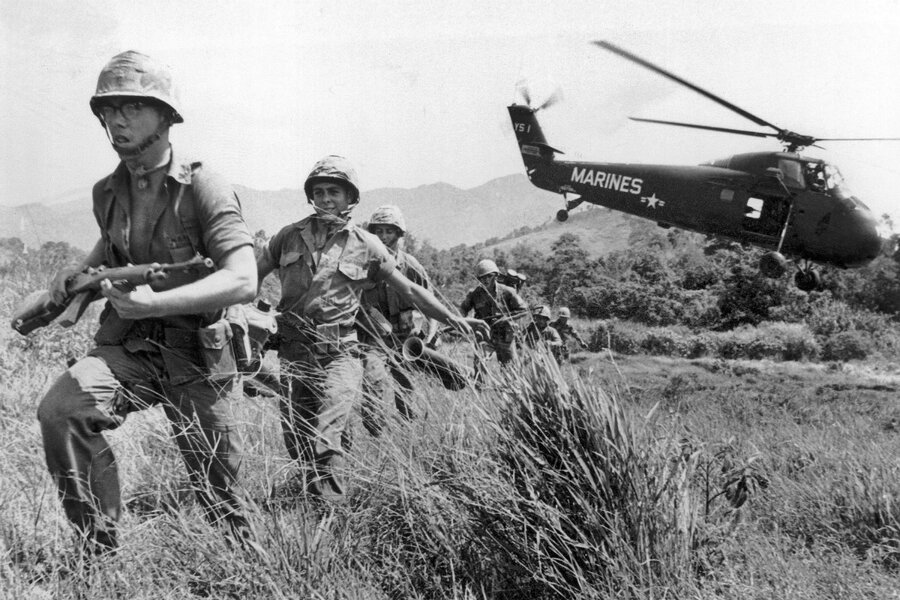Mattis visit highlights shift in US-Vietnam relations
| Washington
A half-century after the Tet Offensive punctured American hopes of victory in Vietnam, Defense Secretary Jim Mattis is visiting the former enemy in search of a different kind of win: incremental progress as partners in a part of the world the Pentagon has identified as vital for the United States to compete with China and Russia.
Mr. Mattis, a retired general who entered the Marine Corps during Vietnam but did not serve there, departed Washington on Sunday for an initial two-day stop in Indonesia, followed by a visit to Hanoi, Vietnam, on Wednesday and Thursday for talks with senior government and military leaders.
By coincidence, Mattis will be in Vietnam just days before the 50th anniversary of the communist offensive on Jan. 30-31, 1968, when North Vietnam attacked an array of key objectives in the South, including the city of Hue, a former imperial capital and cultural icon on the Perfume River. At the time, Mattis was a senior at Columbia High School in Richland, Wash. The following year he joined the Marine Corps Reserves.
The Tet Offensive gave the North an important boost, even though it ultimately was a military failure. It collapsed an air of confidence among US leaders that they would soon win a favorable peace agreement. Looking ahead to 1968, the top US commander in Vietnam at the time, Gen. William Westmoreland, famously declared in a speech in Washington in November 1967 that the war was about to enter a phase "when the end begins to come into view."
The fighting dragged on for seven more years, fueling US street protests and convulsing American politics, before the North prevailed and the last Americans evacuated in 1975.
The former enemies have gradually set aside their wartime differences, in part out of shared concern about China's growing military power and more assertive position in the South China Sea. The Trump administration sees Vietnam as a partner in opposing China's assertion of territorial claims in the South China Sea, including the Spratlys, an island chain where Taiwan, Malaysia, the Philippines, Vietnam, and Brunei also have claims.
Despite the passage of time, the legacy of the US war is never far from the surface.
The countries didn't normalize relations until 1995. It took another two decades before Washington fully lifted a ban on selling deadly weapons to Vietnam. The Vietnamese have largely embraced the new partnership as they've sought to diversify diplomatic and security relations in the region, fearing Chinese primacy. Vietnam fought a border war with China in 1979, and bitterness runs deep.
The current crop of top US generals is too young to have served in Vietnam. The last chairman of the Joint Chiefs of Staff to have been a Vietnam veteran was Adm. Mike Mullen, who served aboard a Navy destroyer in 1969 that provided fire support for American and South Vietnamese ground forces near Da Nang. The only secretary of defense to have fought in Vietnam was Chuck Hagel, wounded in 1968. He served as Pentagon chief from 2013-2015.
But the war isn't a relic of history at the Pentagon. An obscure office, the Defense POW-MIA Accounting Agency, still directs efforts to find and identify remains of Americans killed in Vietnam. Decades of searches still haven't accounted for more than 1,200 people. An additional 350 are missing in Laos, Cambodia, and China, the Pentagon says. Mattis may visit POW-MIA accounting representatives during his visit.
Mattis has shown interest in some of the unfinished business of Vietnam, too. Last month, he approved giving a Medal of Honor to a Marine for valorous actions in a counter-offensive to retake Hue. A Marine gunnery sergeant at the time, John Canley of Oxnard, Calif., had been awarded the Navy Cross for heroic action, including rescuing wounded Marines from Jan. 31-Feb. 6, 1968.
Hue and the Tet Offensive remain a powerful symbol of the war for Americans of that generation; an Associated Press photograph by Eddie Adams of a Vietnamese officer executing a Viet Cong suspect on a street in Saigon on the second day of the Tet Offensive was a rallying cry for US war protesters and is still an iconic symbol of the conflict.
Mattis is the latest in a string of Pentagon chiefs who've visited Vietnam to expand security ties and address China's growing military power.
Ash Carter made the last visit in June 2015, marking two decades of relations and announcing the Pentagon would assign a peacekeeping expert to the US Embassy in Hanoi to help the Vietnamese Defense Ministry prepare for its first deployment on a UN peacekeeping mission. Leon Panetta and his Vietnamese counterpart exchanged personal items from soldiers lost in the war three years earlier.
Mattis has never been to Vietnam. During the war, he attended what was then known as Central Washington State College, graduating in 1972, and earned his commission as a second lieutenant through the Reserve Officer's Training Corps. He rose in the ranks through 41 years on active duty, capping his career as the four-star commander of US Central Command. He had been retired three years when President Trump picked him to lead the Pentagon.
This story was reported by The Associated Press.





